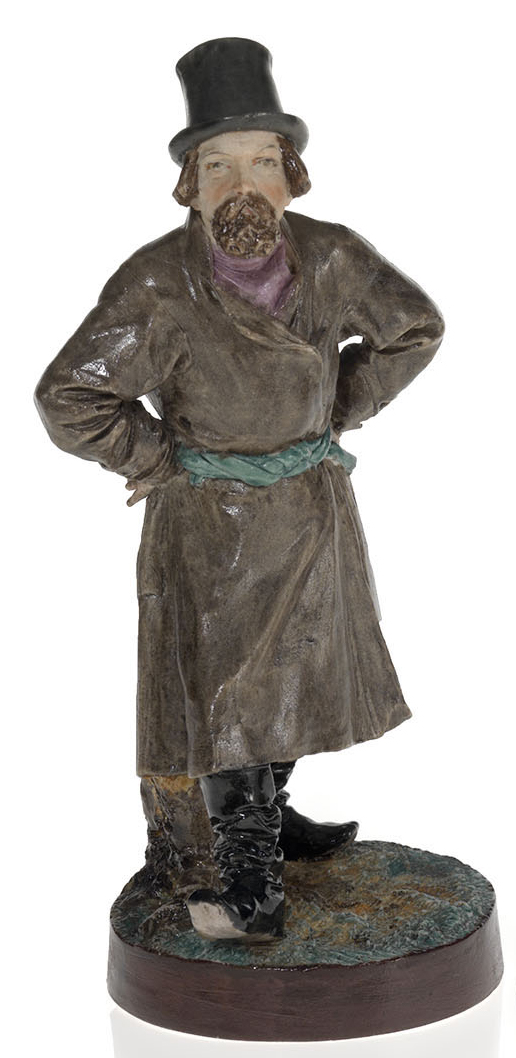MacDougall's Russian Art Auctions 25 March 2015
25 March 2015

* 75.
A Biscuit Porcelain Figurine of a Dancing Man
2,000—3,000 GBP
POPOV MANUFACTORY, MOSCOW, 1840s
Height 20 cm.
with impressed manufactory mark
The small private factories that appeared in Russia, producing objects that the middle class could afford, and also the general interest in folk themes and Russian folklore in the mid-19th century, prompted the emergence in the “musical world of porcelain” of a large number of figurines that lent grace to the theme of fairs and open-air festivities. Figures of balalaika, accordion players and dancing revellers always seen at Russian festivities, notably enriched the range of items offered by the Gardner, Popov, Miklashevsky and other factories with subjects taken from the life of common folk. Always especially popular were the figures of dancing peasants and balalaika players based on popular engravings, mass-produced coloured prints and illustrations from books. There was a significant stratum in Russian rural culture linked to folk musicians, like balalaika and accordion players, and this is skilfully reflected in moulded porcelain. Without these characters any popular merry-making, wedding or other significant events in the life of the countryside was unthinkable. People who loved to dance would gather around the folk musicians, which is why there were often porcelain figures of young women dancers next to the figure of a musician. The Gardner and Popov models were often borrowed by smaller private manufacturers (for example, the Kisselev factory), where the models were naively simplified or given new elements of detail.
Notes on symbols:
* Indicates 5% Import Duty Charge applies.
Ω Indicates 20% Import Duty Charge applies.
§ Indicates Artist's Resale Right applies.
† Indicates Standard VAT scheme applies, and the rate of 20% VAT will be charged on both hammer price and premium.